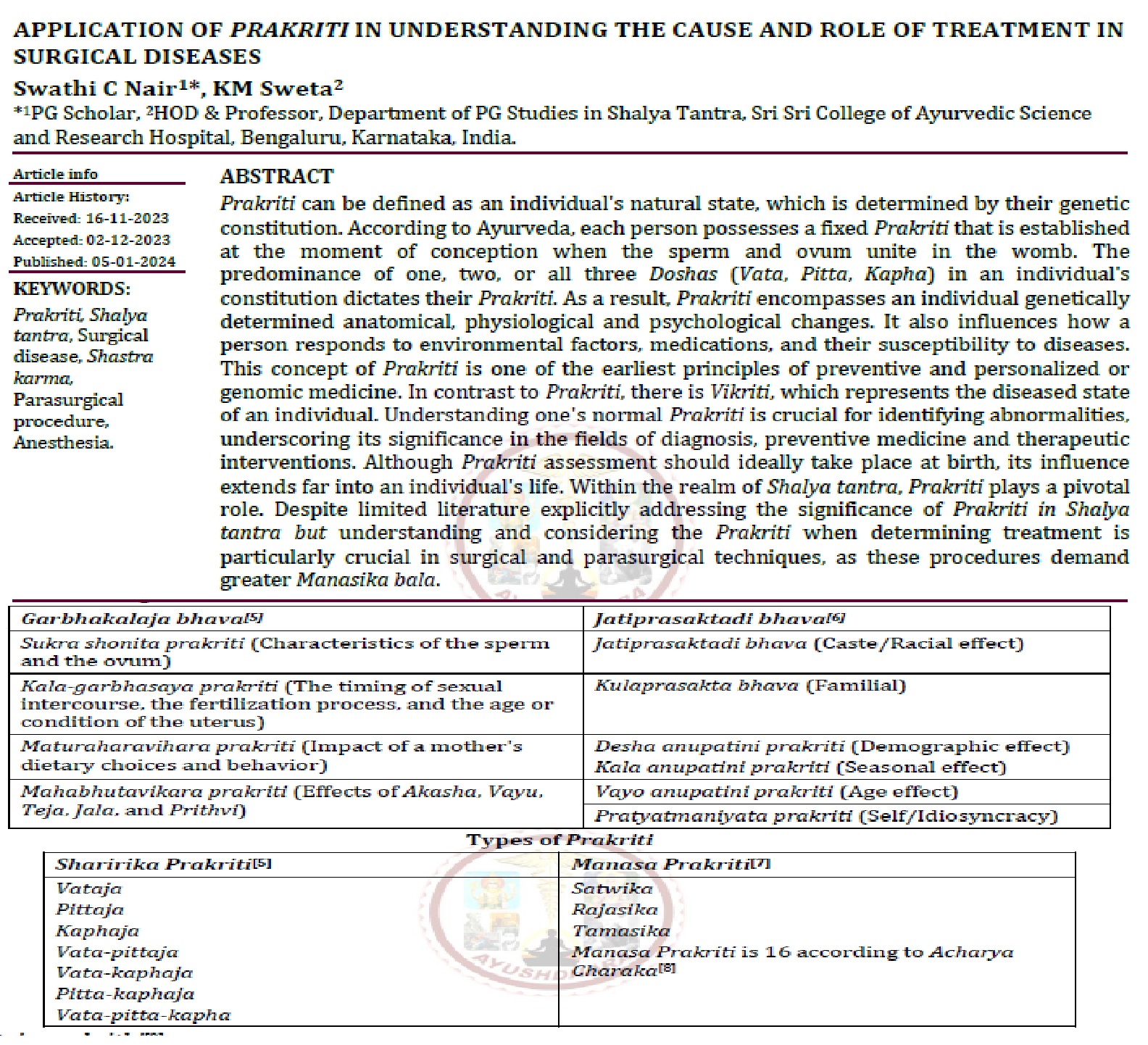Application of Prakriti in Understanding the Cause and Role of Treatment in Surgical Diseases
DOI:
https://doi.org/10.47070/ayushdhara.v10i6.1391Keywords:
Prakriti, Shalya tantra, Surgical disease, Shastra karma, Parasurgical procedure, AnesthesiaAbstract
Prakriti can be defined as an individual's natural state, which is determined by their genetic constitution. According to Ayurveda, each person possesses a fixed Prakriti that is established at the moment of conception when the sperm and ovum unite in the womb. The predominance of one, two, or all three Doshas (Vata, Pitta, Kapha) in an individual's constitution dictates their Prakriti. As a result, Prakriti encompasses an individual genetically determined anatomical, physiological and psychological changes. It also influences how a person responds to environmental factors, medications, and their susceptibility to diseases. This concept of Prakriti is one of the earliest principles of preventive and personalized or genomic medicine. In contrast to Prakriti, there is Vikriti, which represents the diseased state of an individual. Understanding one's normal Prakriti is crucial for identifying abnormalities, underscoring its significance in the fields of diagnosis, preventive medicine and therapeutic interventions. Although Prakriti assessment should ideally take place at birth, its influence extends far into an individual's life. Within the realm of Shalya tantra, Prakriti plays a pivotal role. Despite limited literature explicitly addressing the significance of Prakriti in Shalya tantra but understanding and considering the Prakriti when determining treatment is particularly crucial in surgical and parasurgical techniques, as these procedures demand greater Manasika bala.
Downloads

Downloads
Published
Issue
Section
License
Copyright (c) 2023 AYUSHDHARA

This work is licensed under a Creative Commons Attribution-NonCommercial-ShareAlike 4.0 International License.


